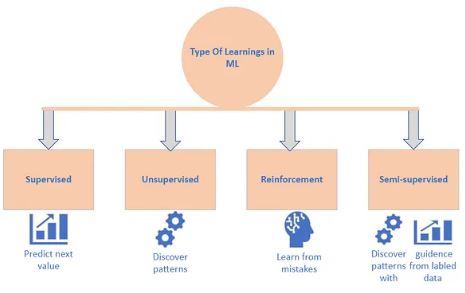Machine Learning (ML) has become a cornerstone of modern technological advancements, enabling computers to learn from data and make intelligent decisions. Central to the field of ML are various learning techniques that empower machines to acquire knowledge and improve performance. In this article, we will explore the different types of learning in Machine Learning, shedding light on their characteristics, applications, and benefits.
1. Supervised Learning
Supervised Learning is one of the most common and widely used types of ML. It involves training a model using labeled data, where the input features are paired with corresponding output labels. The model learns to map the inputs to the correct outputs based on the provided examples. Supervised Learning algorithms excel in tasks such as classification (e.g., spam detection, image recognition) and regression (e.g., predicting housing prices).
2. Unsupervised Learning
Unsupervised Learning deals with unlabeled data, where the goal is to discover underlying patterns or structures without explicit guidance. The algorithms analyze the data to find relationships, group similar instances, or identify anomalies. Clustering, where data points are grouped based on similarity, and dimensionality reduction, which reduces the number of features while preserving relevant information, are common applications of Unsupervised Learning. It is useful in customer segmentation, anomaly detection, and recommendation systems.
3. Reinforcement Learning
Reinforcement Learning revolves around an agent learning to interact with an environment through trial and error to maximize cumulative rewards. The agent takes actions, receives feedback in the form of rewards or penalties, and adjusts its strategy accordingly. It learns through exploration and exploitation, optimizing its actions to achieve long-term goals. Reinforcement Learning has found success in complex tasks like game-playing (e.g., AlphaGo), robotics, and autonomous systems.
4. Semi-Supervised Learning
Semi-Supervised Learning combines elements of both Supervised and Unsupervised Learning. It leverages a small amount of labeled data along with a larger pool of unlabeled data. The labeled data provides explicit guidance, while the unlabeled data helps uncover hidden structures or improve generalization. Semi-Supervised Learning is beneficial when obtaining labeled data is expensive or time-consuming. It has applications in areas such as speech recognition, sentiment analysis, and fraud detection.
5. Transfer Learning:
Transfer Learning involves leveraging knowledge learned from one task or domain and applying it to a different but related task or domain. Instead of training a model from scratch, Transfer Learning initializes the model with pre-trained weights and fine-tunes it on the target task. This approach is particularly useful when there is limited labeled data available for the target task or when training resources are constrained. Transfer Learning has proven effective in image classification, natural language processing, and computer vision applications.
Conclusion:
Machine Learning encompasses a diverse range of learning techniques, each tailored to address specific challenges and domains. Supervised Learning, Unsupervised Learning, Reinforcement Learning, Semi-Supervised Learning, and Transfer Learning are fundamental paradigms that drive the advancement of intelligent systems. By understanding the characteristics and applications of these learning types, practitioners can choose the most suitable approach to tackle real-world problems and unlock the full potential of Machine Learning.

